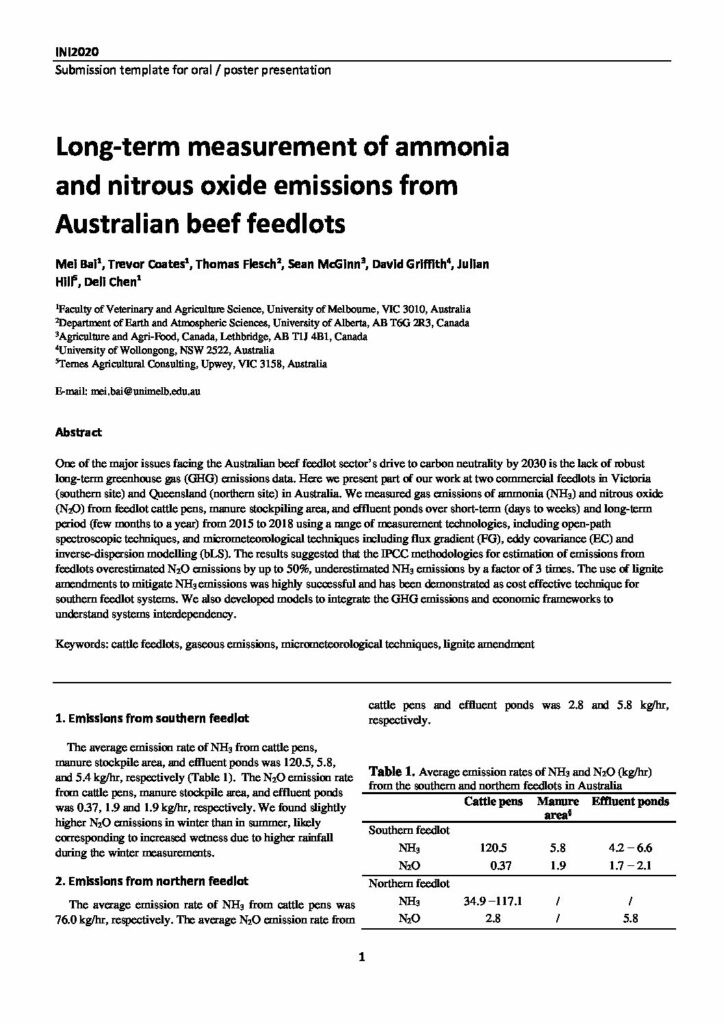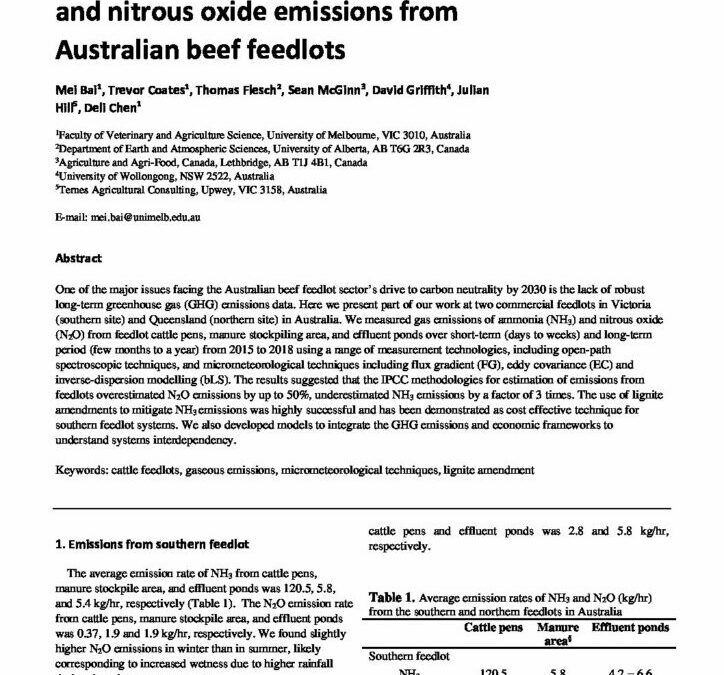Long-term measurement of ammonia and nitrous oxide emissions

One of the major issues facing the Australian beef feedlot sector’s drive to carbon neutrality by 2030 is the lack of robust long-term greenhouse gas (GHG) emissions data. Here we present part of our work at two commercial feedlots in Victoria (southern site) and Queensland (northern site) in Australia. We measured gas emissions of ammonia (NH3) and nitrous oxide (N2O) from feedlot cattle pens, manure stockpiling area, and effluent ponds over short-term (days to weeks) and long-term period (few months to a year) from 2015 to 2018 using a range of measurement technologies, including open-path spectroscopic techniques, and micrometeorological techniques including flux gradient (FG), eddy covariance (EC) and inverse-dispersion modelling (bLS).
The results suggested that the IPCC methodologies for estimation of emissions from feedlots overestimated N2O emissions by up to 50%, underestimated NH3 emissions by a factor of 3 times. The use of lignite amendments to mitigate NH3 emissions was highly successful and has been demonstrated as cost effective technique for southern feedlot systems. We also developed models to integrate the GHG emissions and economic frameworks to understand systems interdependency.
